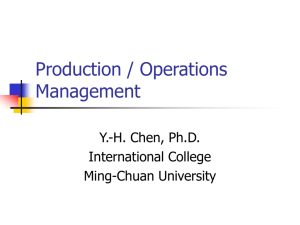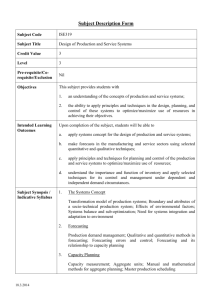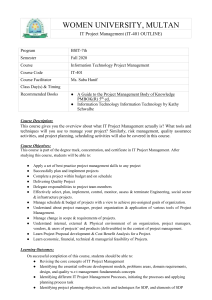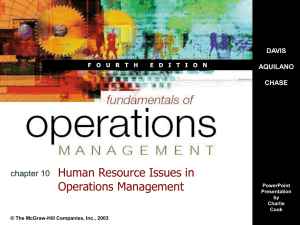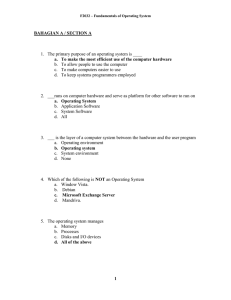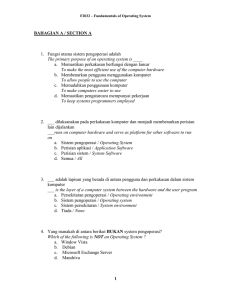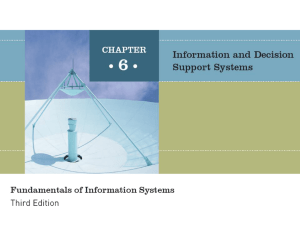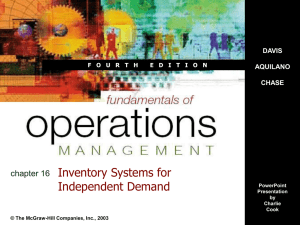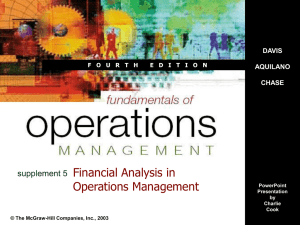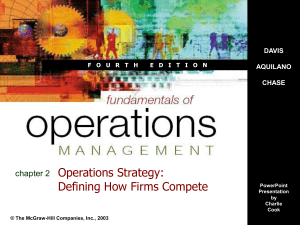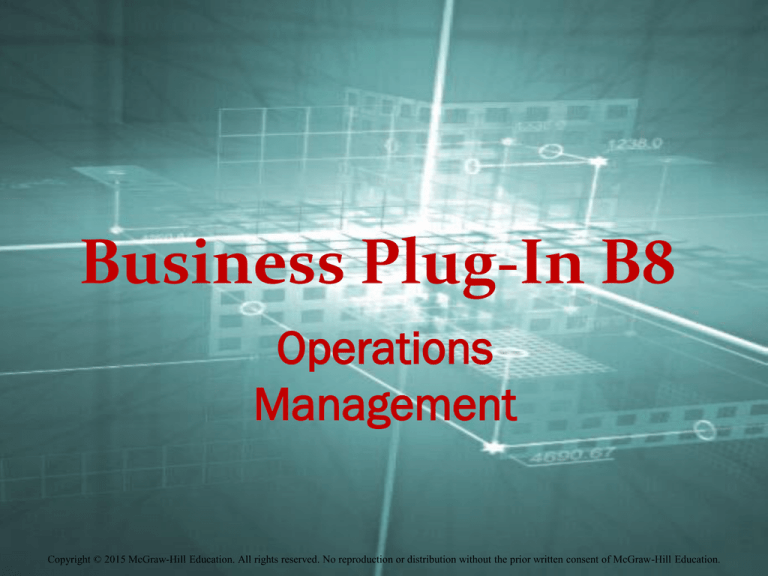
Business Plug-In B8
Operations
Management
Copyright © 2015 McGraw-Hill Education. All rights reserved. No reproduction or distribution without the prior written consent of McGraw-Hill Education.
LEARNING OUTCOMES
1. Explain operations management role in
business
2. Describe the correlation between
operations management and information
technology
3. Describe the five characteristics of
competitive priorities
8-2
OM FUNDAMENTALS
O Production - is the creation of goods and
services using the factors of production
O Production management - describes all the
activities managers do to help companies
create goods
O Operations management (OM) - the
management of systems or processes that
convert or transform resources into goods and
services
8-3
OM FUNDAMENTALS
O Transformation process - the actual
conversion of inputs to outputs
8-4
OM FUNDAMENTALS
8-5
OM FUNDAMENTALS
O Value-added - the term used to describe the
difference between the cost of inputs and
the value of price of outputs
8-6
OM IN BUSINESS
O How does an airline service organization’s
OM team adds value?
O Forecasting
O Capacity planning
O Scheduling
O Managing inventory
O Assuring quality
O Motivating and training employees
O Locating facilities
8-7
IT’S ROLE IN OM
O Managers use IT to heavily influence OM
decisions including :
O What: What resources will be needed and in
O
O
O
O
what amounts?
When: When should the work be scheduled?
Where: Where will the work be performed?
How: How will the work be done?
Who: Who will perform the work?
8-8
OM Strategic Business
Systems
O Operations strategy addresses broad
questions about using major resources to
achieve corporate objectives
O Major long-term issues addressed in
operations strategy include:
O
O
O
O
How big to make the facilities?
Where to locate the facilities?
When to build additional facilities?
What type of process(es) to install to make the
products?
8-9
OM Strategic Business
Systems
O Strategic planning - focuses on long range
planning
O Strategic business units (SBUs) - consist of
several stand-alone businesses
O Materials requirement planning (MRP) -
use sales forecasts to make sure that needed
parts and materials are available at the right
time and place
8-10
OM Strategic Business
Systems
O Tactical planning - focuses on producing
goods and services as efficiently as
possible within the strategic plan
O Global inventory management system -
provides the ability to locate, track, and
predict the movement of every component
or material anywhere upstream or
downstream in the production process
8-11
OM Strategic Business
Systems
O Operational planning and control
(OP&C) - deals with the day-to-day
procedures for performing work, including
scheduling, inventory, and process
management
O Inventory management and control
system
O Transportation planning system
O Distribution management system
8-12
COMPETITIVE OM
STRATEGY
O Five key competitive priorities which a
company can add value to its OM
decisions including:
1. Cost
2. Quality
3. Delivery
4. Flexibility
5. Service
8-13
COMPETITIVE OM
STRATEGY
1. Cost: there can be only one lowest-cost
producer, and that firm usually
establishes the selling price in the
market
2. Quality: is divided into two categories
product and process quality
O
O
O
O
Six Sigma Quality
Malcolm Balridge National Quality Awards
ISO 900, ISO 14000
CMMI
8-14
COMPETITIVE OM
STRATEGY
3.
Delivery: a firms ability to provide
consistent and fast delivery
4.
Flexibility: a firms ability to offer a wide
variety of products
5.
Service: high-quality customer service
adds tremendous value to an ordinary
product
8-15
OM AND THE SUPPLY
CHAIN
O Supply chain - consists of all parties
involved, directly or indirectly, in the
procurement of a product or raw material
O Supply Chain Management (SCM) – involves
the management of information flows
between and among stages in a supply
chain to maximize total supply chain
effectiveness and profitability
8-16
OM AND THE SUPPLY
CHAIN
O Typical manufacturing supply chain
8-17
OM AND THE SUPPLY
CHAIN
O Typical service supply chain
8-18


